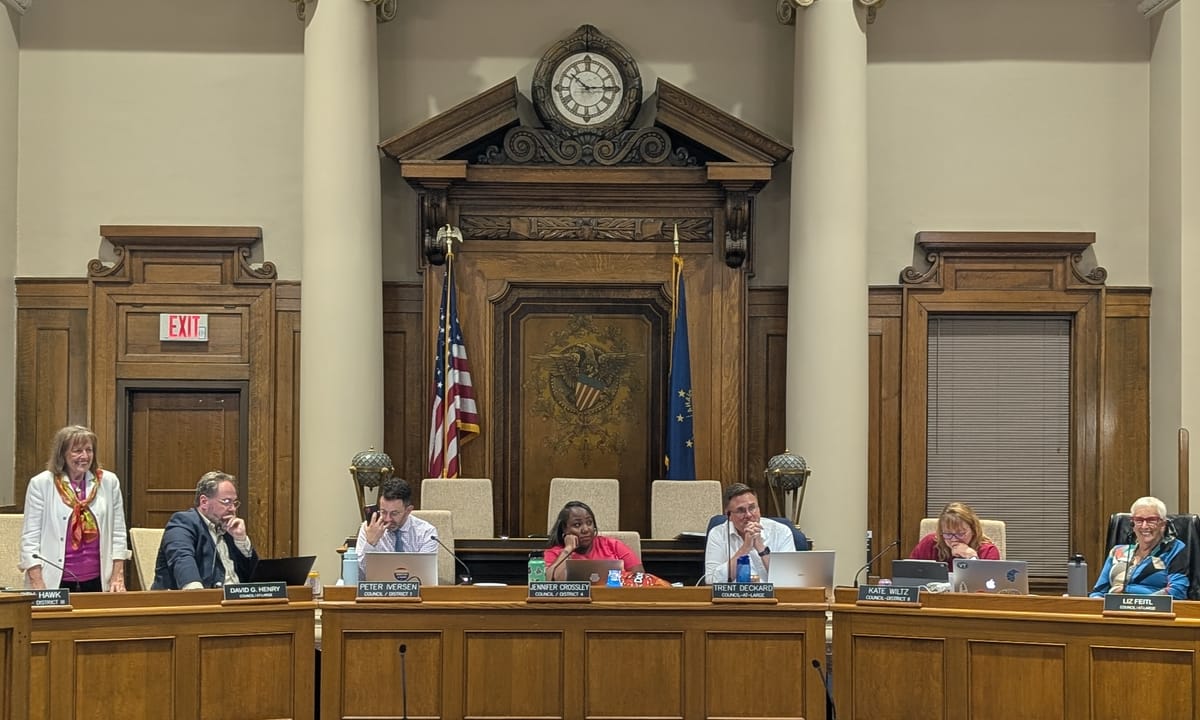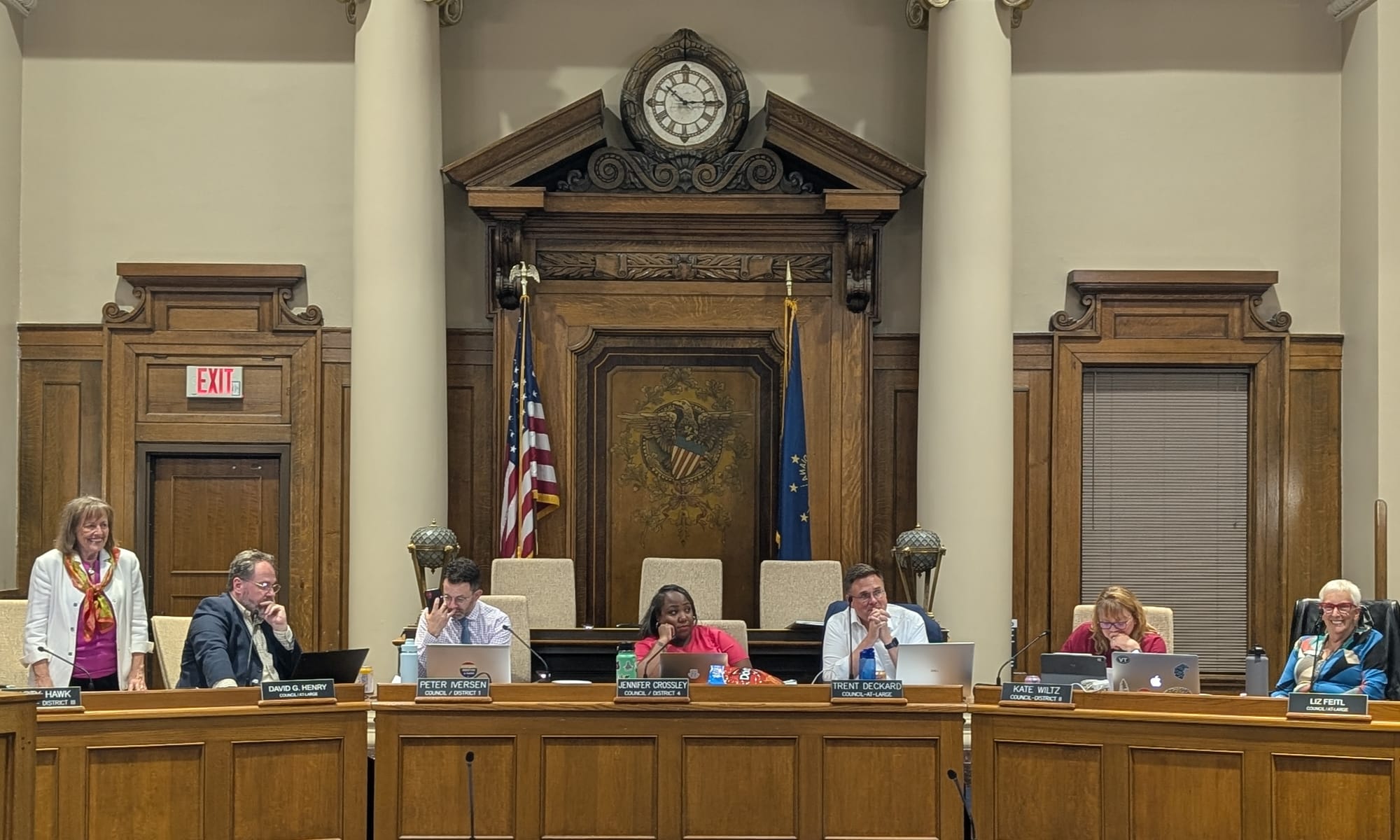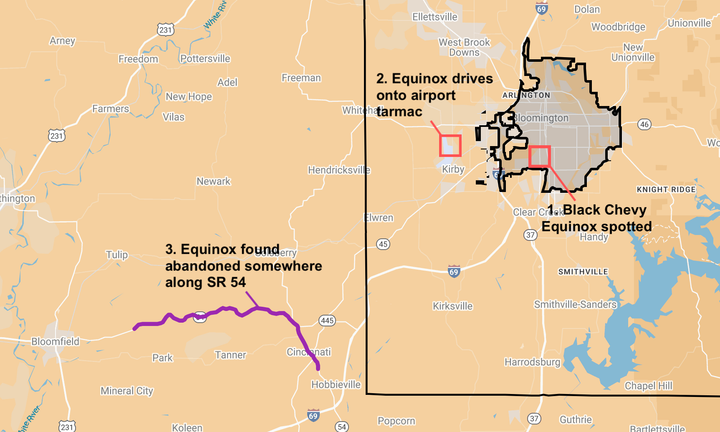Monroe County budget notebook: Draft deficit for 2026 drops under $4M, 15 health department jobs shifted back to state-funded lines
The Monroe County council deliberated around three and a half hours on the draft 2026 budget, which at the beginning of the night showed a deficit of around $8 million. By the time the meeting was over, the council had made enough cuts to reduce the deficit to $3.88 million.


After it had dispatched its regular meeting agenda on Tuesday night, the Monroe County council deliberated around three and a half more hours on the draft 2026 budget, which at the beginning of the night showed a deficit of around $8 million.
By the time council president Jennifer Crossley adjourned the meeting around 11:15 p.m. the council had made enough cuts to reduce the deficit to $3.88 million. That’s measured by $131.54 million in expenditures against $127.66 million in revenues.
An additional deficit reduction tactic that the council might use between now and the final adoption of the budget is to find ways to pay for items in the airport and parks budget with money from the county government’s share of the 1% food and beverage tax.
Also mulled on Tuesday night was the possibility of passing a resolution regulating the use of overtime for those departments that don’t include first responders or have an emergency management function. A draft of such a resolution was presented to the council, but no action was taken on Tuesday.
The council also batted around the idea of implementing a hiring freeze.
The adoption of Monroe County’s 2026 budget by the county council is currently set for Oct. 14.
On Tuesday night, Crossley acknowledged the progress, but also noted the work left to do. “We did a heck of a lot of work tonight with a lot of things … We still got some ways to go.”
The more than $4 million that the council cut came from a combination of whittling and chopping. As an example of whittling, the election board’s line for office supplies got reduced from $25,000 to $13,500. As an example of chopping, the council reduced the per employee allocation for the self-funded health insurance from $18,000 to $16,500, for a total savings of around $1 million.
Another big ticket item was the elimination of an expenditure of around $750,000 for the health department from COVID relief funds, which was intended to support the purchase of a van for a mobile clinic.
The health department was the source of another big chunk of savings—at least to the funds that are supported by the property tax levy. The council moved 15 health department positions out of fund 1159, which is supported by the property tax levy, into fund 1161, which gets its revenue from the state government, through Health First Indiana (HFI). That move saved expenditures out of the property tax levy in an amount that can be ballparked at around $1 million.
But the council’s Tuesday night action on health department positions exactly reversed the council’s action on July 22, which moved the 15 positions out of the HFI-funded lines. The council’s logic in moving the positions out of HFI-funded lines had been to avoid a new restriction in state law which says that the HFI money can be spent to benefit only Indiana residents who are “lawfully present in the United States.”
In July, the wording of the council’s agenda item indicated that the logic behind moving positions out of the HFI-funded lines was “to reduce barriers to serving all populations in need of public health services.”
This year’s budget crunch caused the council to rethink whether it wants health department employees to verify the “lawfully present” status of people who receive core health services covered by HFI funds, such as maternal and child health, trauma and injury prevention, chronic disease prevention, lead exposure prevention, and infectious disease control.
The positions that were moved from one fund to the other include: two assistant registrars; environmental health specialist (wastewater); senior environmental health specialist (wastewater); environmental health specialist (general); environmental health specialist (foods); senior environmental health specialist (foods); senior environmental health specialist (general); environmental health services director; population health outreach manager; health services director; maternal and child health coordinator; vital records and administrative support assistant director; behavioral health and wellness coordinator.
The Monroe County health board meets this Thursday at 4:30 p.m. No agenda is yet posted. But one topic of at least informal discussion is likely to be the council’s reversal of the position swap across funds, and how that might be analyzed as a negative impact on the health department’s total budget.




Comments ()